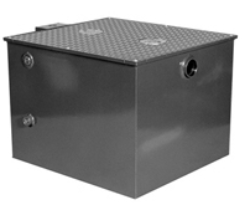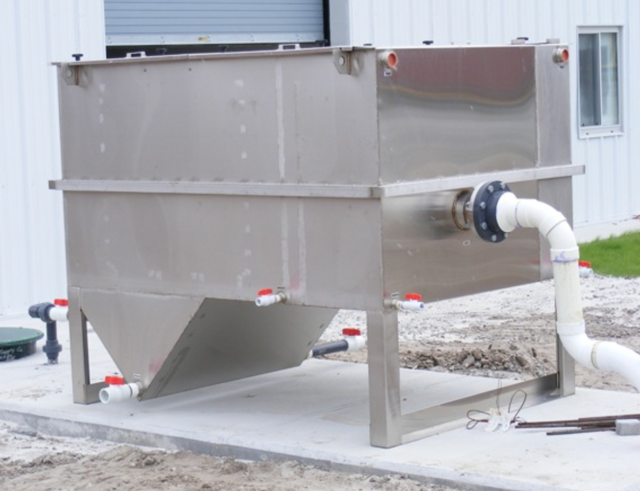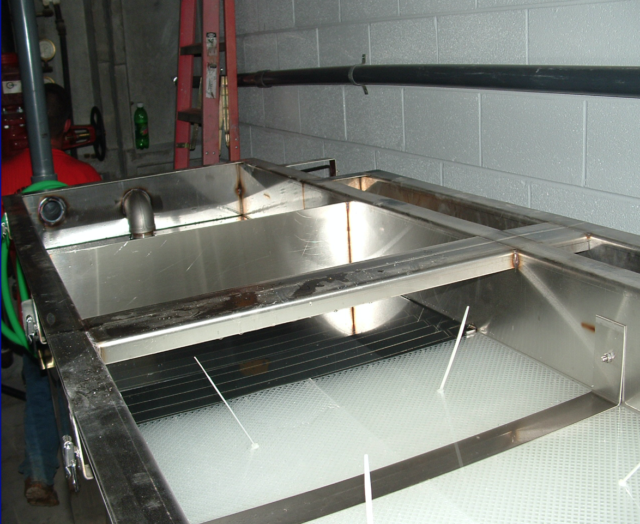Even though the terms “Oil Interceptors” and “Oil Water Separators” are often used
interchangeably, they are very different systems.
Interceptors

Oil interceptors are typically used in low flow drain lines where small quantities of oils, sediment
and other liquid contaminants can be “intercepted”. These drain lines may come from variety of
facilities including covered parking garages, machine shops, service stations, and manufacturing
facilities.
Usually constructed of steel, fiberglass or plastic, interceptors are simple systems which include a
baffle plate, a solids bucket, and a separation area. As the water enters the interceptor, a baffle
plate reduces the flow and turbulence of the incoming water which helps to drop out some solids
and sludge.
A low flow rate and little turbulence permits the oils and other light density to slowly separate from
the water and rise to the top of the separation area. From there, relatively oil-free water is
discharged to the sewer.
Oil Water Separators
 In comparison, Oil Water Separators have a far more sophisticated and efficient design. They are used in higher volume applications such as industrial wash operations, parking lots, re-fueling facilities and military installations where there is a potential for a much higher volume of water, oil, and contaminants.
In comparison, Oil Water Separators have a far more sophisticated and efficient design. They are used in higher volume applications such as industrial wash operations, parking lots, re-fueling facilities and military installations where there is a potential for a much higher volume of water, oil, and contaminants.
The standard oil water separator is a steel or stainless steel tank containing an inlet compartment, baffles system, sludge chamber, separation chamber with coalescing media, and clean water outlet chamber.
 The water enters the inlet compartment where the oil separation process begins. Here, baffles slow down the water flow which causes some of the solids to drop out of suspension. Next, parallel corrugated coalescing media in the separation chamber cause the oil droplets in the water to coalesce together, and increase in size until they separate from the water. This coalescing media, with an internal structure of interconnecting channels, can remove essentially all free and dispersed, non-emulsified oils to an effluent concentration of less than 5 ppm – which is acceptable for discharge to most municipal sewer systems.
The water enters the inlet compartment where the oil separation process begins. Here, baffles slow down the water flow which causes some of the solids to drop out of suspension. Next, parallel corrugated coalescing media in the separation chamber cause the oil droplets in the water to coalesce together, and increase in size until they separate from the water. This coalescing media, with an internal structure of interconnecting channels, can remove essentially all free and dispersed, non-emulsified oils to an effluent concentration of less than 5 ppm – which is acceptable for discharge to most municipal sewer systems.

